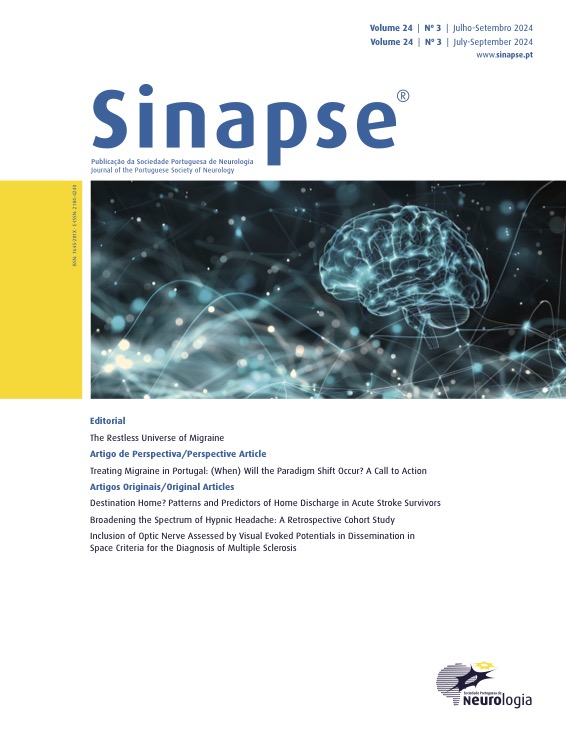The Restless Universe of Migraine
DOI:
https://doi.org/10.46531/sinapse/ED/114/2024Keywords:
Perturbações de EnxaquecaDownloads
References
Pessoa F. The book of disquiet. Penguin Classics; 2015. pp. 331-332.
Ashina M. Migraine. Ropper AH, editor. N Engl J Med. 2020;383:1866–1876.
Bolay H, Reuter U, Dunn AK, Huang Z, Boas D a, Moskowitz M a. Intrinsic brain activity triggers trigeminal meningeal afferents in a migraine model. Nat Med. 2002;8:136–142.
Schulte LH, May A. The migraine generator revisited: continuous scanning of the migraine cycle over 30 days and three spontaneous attacks. Brain. 2016;139:1987–1993.
Puledda F, Viganò A, Sebastianelli G, et al. Electrophysiological findings in migraine may reflect abnormal synaptic plasticity mechanisms: A narrative review. Cephalalgia. 2023; 43(8):3331024231195780.
Coppola G, Parisi V, Di Renzo A, Pierelli F. Cortical pain processing in migraine. J. Neural Transm. 2020. p. 551–566.
Messina R, Rocca MA, Goadsby PJ, Filippi M. Insights into migraine attacks from neuroimaging. Lancet Neurol. 2023;22:834–846.
Hautakangas H, Winsvold BS, Ruotsalainen SE, et al. Genome-wide analysis of 102,084 migraine cases identifies 123 risk loci and subtype-specific risk alleles. Nat Genet. 2022;54:152–160.
Lipton RB, Buse DC, Nahas SJ, et al. Risk factors for migraine disease progression: a narrative review for a patient-centered approach. J Neurol. 2023;270:5692.
Seeley WW. The Salience Network: A Neural System for Perceiving and Responding to Homeostatic Demands. J Neurosci. 2019;39:9878–9882.
Altamura C, Coppola G, Vernieri F. The evolving concept of multimorbidity and migraine. Handb Clin Neurol. 2024;199:535–566.
Downloads
Published
How to Cite
Issue
Section
License
Copyright (c) 2024 Gianluca Coppola (Autor)

This work is licensed under a Creative Commons Attribution-NonCommercial 4.0 International License.








